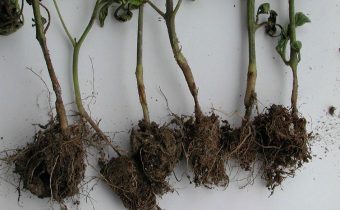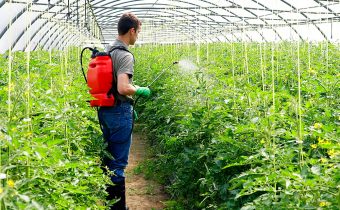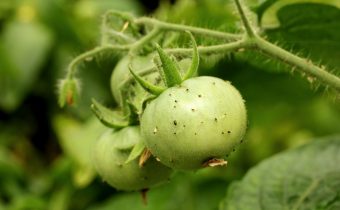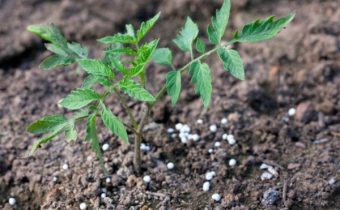Slicing Tomato Roots
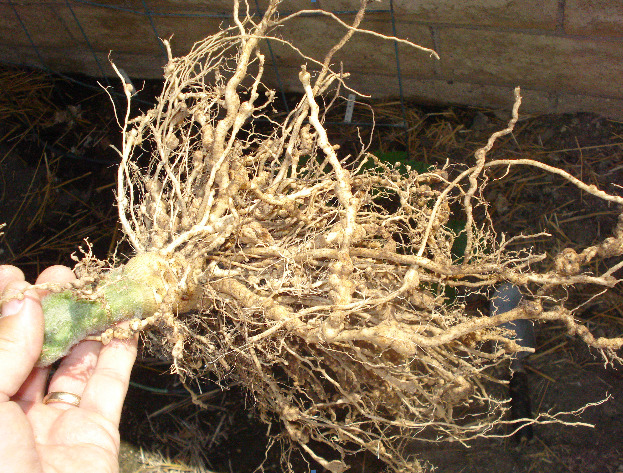
Corking roots is a disease in which the process of decay is traced. The affected cultures are weak and have a low growth force. In crops, daytime wilt and rapid loss of leaves are traced.
The most effective method of preventing a violation is soil fumigation When growing tomatoes in greenhouse conditions, they should be grafted for resistance to root clogging.
Causative agent
The causative agent of root fever is Pyrenochaeta lycopersici. The fungal pathogen forms small pycnidia with unicellular hyaline conidia that have compacted mycelium in the form of micro sclerotia and international chlamydospores. In addition to tomatoes, the pathogen affects the lettuce and cucumbers.
The reasons
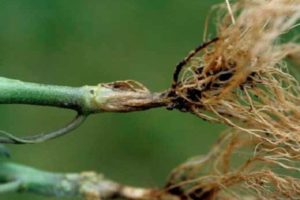
When basal fever, the first sign of an infectious process is root rot. The main symptom is the appearance of brown rot on small stones, and then on large ones. The affected areas of taproot swell and form pronounced gaps. The lesion covers the root neck, root and low of the stem. The bush quickly rots and dies. Attention gardeners should pay attention to the fact that the fungus will not destroy the plant, if there are no required bases for its manifesto. Most often the causes of the development of the disease are in violation of the algorithm of work of vegetable growers.
The main errors include the following factors:
- Lack of pre-sowing seed treatment. The bulk of pathogens penetrates the ground with infected seed and is stored as spores on the surface.
- Deviations from temperature. In this case, the problem manifests itself at an early stage of germination and growing seedlings.
- Temperature fluctuations. Cold soil mixture and the significant difference between the air temperature creates strong prerequisites for the development of mycosis.
- Non-compliance with the recommended humidity conditions. Waterlogging is a key condition for enhancing the growth and development of pathogenic microorganisms.
- Wet air. Watering with a spray is considered as an intermediary for the spread of infection from one plant to another.
- Injuries to the root system. Transplantation, weeding and loosening if the equipment is not followed may cause root injury. The epidermal barrier is broken, and the fungus is easily absorbed into the root tissue.
All auxiliary instruments must be kept clean and disinfected using a fungicidal solution. Infections can penetrate the soil when using untreated tools.
Development
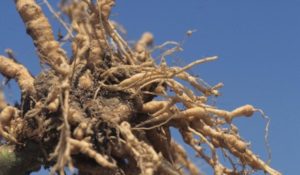
The fungus is active in many crops and its spores, present on plant residues and in the soil for many years. The disease most often progresses and affects plants at low temperatures and high humidity of the soil mixture.
The researchers determined that the strains of the fungus from areas with high temperature, show their pathogenicity when the temperature of the soil fluctuates to a range of 25-30 degrees. The spread of fungi often occurs through a special inventory. The main danger of destruction is the untimely action of the gardener. The root fever progresses fairly quickly.
Symptoms
Affected tomatoes most often look undersized and lifeless.As the disease progresses, the leaves wither and fall off. The main symptoms are visible on the roots, in the form of minor injured areas of elliptical shape. Lesions are light brown in color. This stage of the disease is regarded as brown rot of the roots.
As the manifesto affects large roots and there are massive affected areas. They look bloated and have elongated cracks, it is these conditions that give them a peculiar appearance. By this stage of the disease, all the small and medium roots die off, the taproot, and the base of the stem changes the root and color and subsequently disappears.
Control measures

If the first symptoms of root fever are found, the following activities should be carried out:
- If mulch is present, it should be removed and the topsoil carefully loosened to ensure quick removal of water.
- It is necessary to stop watering for some time, sprinkle the soil around the tomato with wood ash, remove the leaves in the lower tier.
- When growing plants in a greenhouse, airing should be provided.
Such agrotechnical manipulations will help restore the necessary indicators and remove the prerequisites for the growth and spread of fungal infections. At the next stage, it is worth treating with the help of medical preparations For this purpose, use pounds of cheese compositions:
- Ridomil Gold;
- colloidal sulfur;
- Tiovit Jet;
- Fundazol.
For processing should not use drugs that have a complex effect. The main feature of such compositions is that after entering the plant tissue, they quickly pass through the vascular system and are absorbed into the roots. Spraying the leaves and stems will be sufficient to ensure proper treatment.
Prevention
Soil fumigation is the main method of root rot prevention, followed by root sampling. When planting tomatoes in the greenhouse, the most effective is the vaccination against resistance to such a disease.
Fumigation - the destruction of various pathogenic microorganisms, subject to the influence of caustic gases and vapors. Substances from which vapor and gas are produced are considered fumigants. To create such breeds use special agricultural devices. Fumigation is used to disinfect and remove insects in many industrial facilities.
Resistant varieties
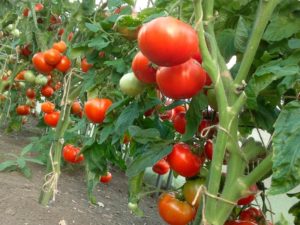
The main varieties with the highest resistance to such a lesion can be represented as follows:
- Charisma. The variety has a high yield and medium ripeness. After planting in open ground gives the harvest for 115 days. One fruit has an average size, its weight is approximately 120-170 g.
- Vologda. Tomato varieties Vologda recommend growing in a greenhouse. The variety has large fruits, quickly grows and gives up to 5 kg of fruits per season. It tolerates all types of diseases and viruses.
- Bohemia. Represents a hybrid with a terminal type of a bush. The variety is considered as universal, that is, it can be grown both in open ground and in the greenhouse. The variety is bred with high resistance to all diseases.
- Blitz (early ripe). The tomato grows well in open field conditions. The first fruits gives 80 days. Breeders provided a variety of grafts to various diseases.
- Puzata Hata. Early ripe, it has large and beautiful ribbed fruits, the mass of which is about 300 g. Tomatoes ripen on the 110th day, they are sweet and ripen very quickly. With proper care, up to 11 kg of fruit can be harvested from the bush per season.
- Ilyich Sustainable hybridwho is not sick. Maturity is 85 days. During this time of payment they gain weight up to 150 g, about 5 fruits form on a bush per season. Tomato is used in homemade preparations.
The information provided will allow you to learn how to prevent the development of root fever in tomatoes, and how to choose the most resistant varieties that do not undergo an unpleasant defeat.


